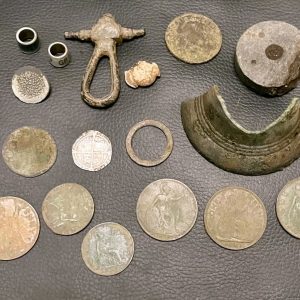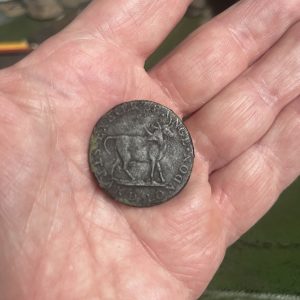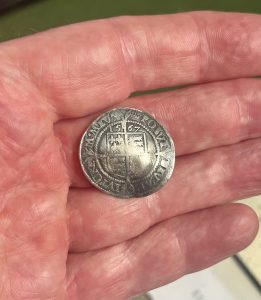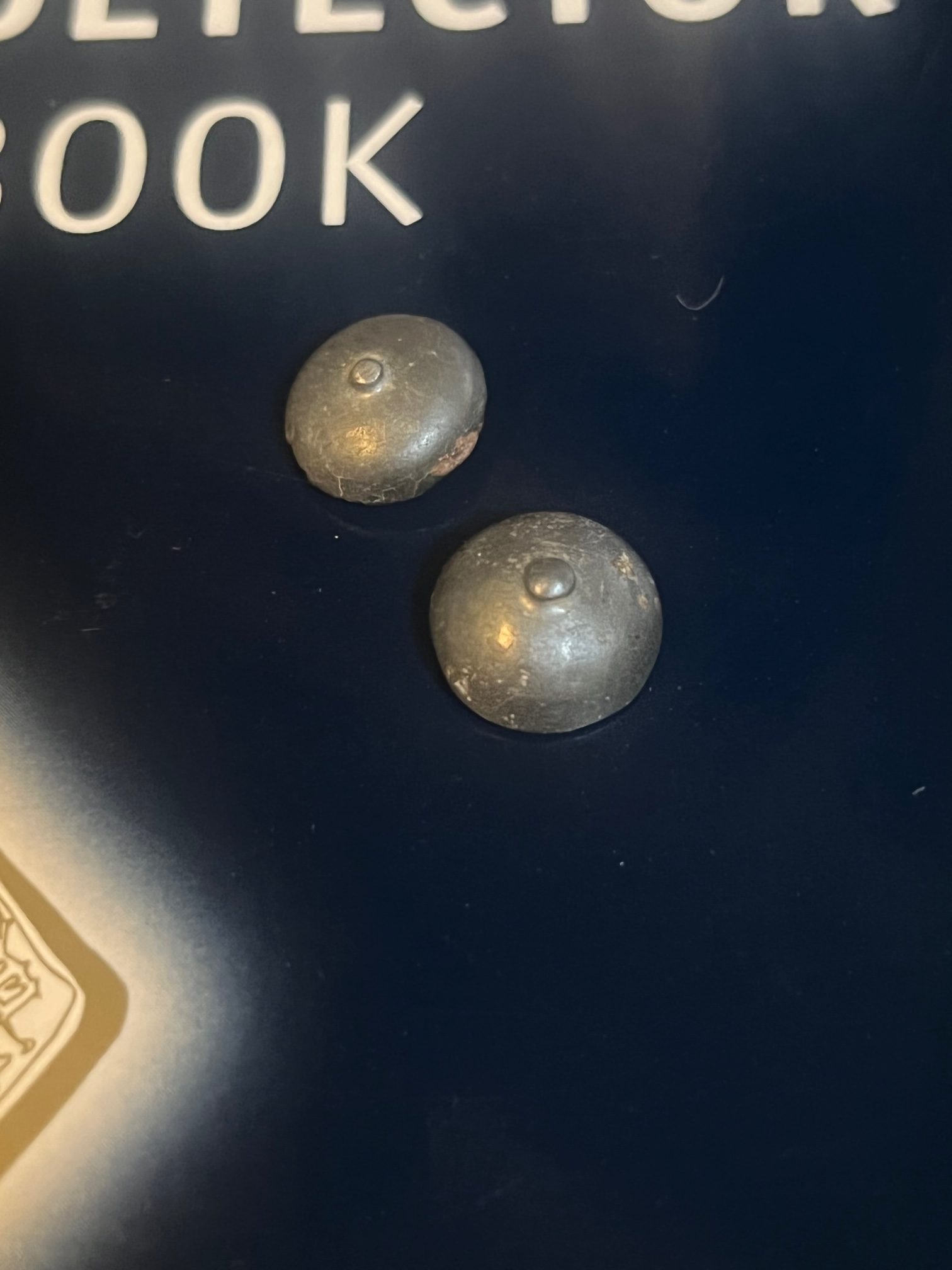
These two small buttons were found on my very first permission almost exactly two years ago. They are simple buttons that would have originally had an wire loop to attach them to an item of clothing, these have long since corroded away leaving behind just the tombac button itself.
Unusually I got this permission by email. I was 3 weeks into owning a metal detector and had been on just one organised dig with it, but I was hooked, but had no idea if, or how I was ever going to get a permission of my own and wasn’t keen on the idea of knocking on farmers doors to ask, now I don’t have a problem asking, but back then I wasn’t sure how to go about it.
So I searched online for farms near me with an email address. I found just two and sent them each an email introducing myself and asking for permission to detect. The next day one of them replied to say, yes, no problem, why didn’t I come along on the following Sunday and he would show me around. Talk about getting lucky!
Of course I knew nothing about the farm or its history, I was just pleased to have somewhere to learn how to detect. The farm was just 10 minutes drive from where I lived and turned out to be just over 90 acres in total. I duly turned up on that Sunday and met the farmer and for the next 3 months I was down there as often as possible teaching myself how to detect and getting to know my metal detector.
On one occasion I was detecting in a large stubble field and was finding various items. It was in this field that I found my first ever hammered silver coin, it was damaged, but I was happy to have found, I also found a very small medieval strap end.
Towards one end of the field I found one of these tiny buttons, it almost looked like silver, but not quite, at the time I didn’t even know that it was a button, but I knew that it was quite old. A little later I found another, almost identical one.
Once I was back home I gave them a light cleaning and set about trying to work out what they were. I posted them on a couple of Facebook groups and a couple of people identified them as tombac pimple button from the mid 1600’s and that they were a type seen on military uniforms of the day.
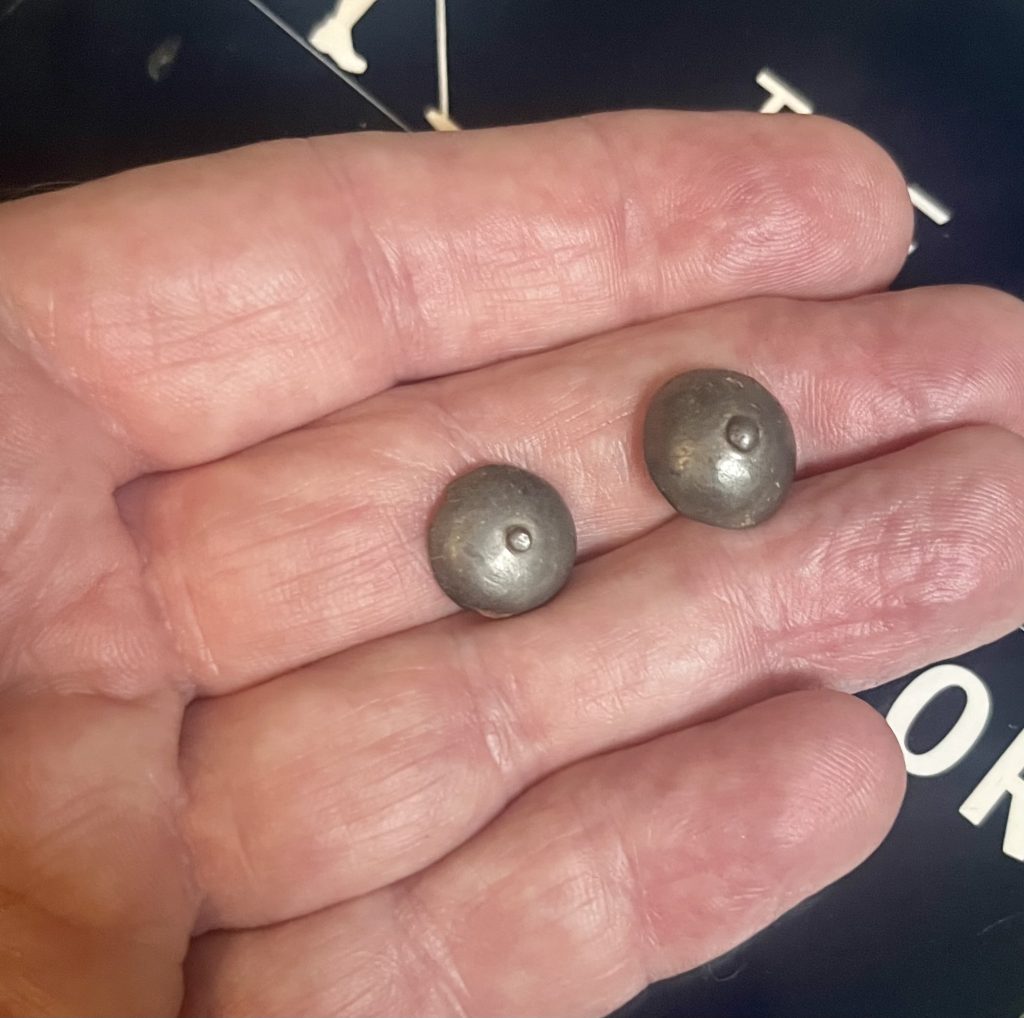
I thought military? mid 1600’s? Surely that was English Civil War era?
I started to do some research to see if the area had any English Civil War connections, and sure enough the town just a few hundred yards away was the site of two large battles in 1643. I then found that a particular field just outside of the town had been used as the lodgements for the Parliamentary forces during the first of these battles and the field was named in these records. I wondered how far this field was from where I was detecting, so armed with the name of the field I looked at old tithe maps from the mid 1800’s which showed all the individual field names to see if the mid 1600’s field name was the same as it was in the mid 1800’s. I won’t reveal the name of the field here, but it was a very distinctive three word name that was fairly unique. I found a field of the exact same name just outside the town and then compared that field on the old tithe map to the modern fields today.
I was stunned to realise that the field that I had been detecting on, was the very same field that the Parliamentary army camped on in 1643 and where the battle of March 1643 took place. So could these two buttons have fallen from the tunic of a soldier in battle on that day. It would seem highly likely to me. Was his uniform snagged on a hedge as the fighting raged around him? Was he a victim of the battle and he lay injured or killed? Was his tunic ripped open to tend to his wounds and the buttons popped off only for me to find them almost 400 years later?
Well we shall never know but the two buttons are definitely from that era and definitely found in a field where soldiers were camped out and later fighting, so it is very likely that they originate from that battle.
I haven’t been able to get back on that field since then due to almost constant crops being on it, but I hope to return there one day soon.
